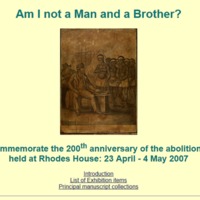
Am I Not a Man and a Brother?
‘Am I Not a Man and a Brother?’, an online exhibition to mark the bicentenary, was launched by the Bodleian Library of African and Commonwealth Studies at Rhodes House. Some of the items were also on view in an exhibition at Rhodes House in April and May 2007. The exhibition included manuscripts and books from the Library, among them the manuscript journal of Rev. James Ramsay, who wrote and worked against slavery after seeing for himself the conditions on board a slave ship while a Royal Navy surgeon. Also exhibited were related artefacts from the collection of Franklin Smith, including a tobacco jar and a clay pipe bowl, both in the shape of the head of a slave (indicating that their owners may have been slave owners), and the late 18th-century engraving of a slave market in the West Indies, published by an anti-slave trade body.
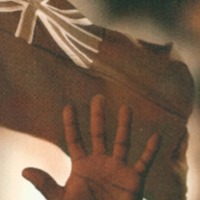
Chasing Freedom: The Royal Navy and the Suppression of the Transatlantic Slave Trade
An exhibition at the Royal Naval Museum at Portsmouth Historic Dockyard explored the role of the Royal Navy squadron established after 1807 to patrol the West African coast and suppress the transatlantic slave trade. Using illustrations, contemporary accounts and original diaries of Royal Navy personnel, the exhibition examined key aspects of the campaign against Atlantic slave traders. It also looked at the Royal Navy's efforts against human trafficking and in the pursuance of humanitarian rights today. There was an accompanying programme of schools workshops and community events. Two specially produced films discussed the legacy of the squadron's work and recreated the abolition debates of the time.
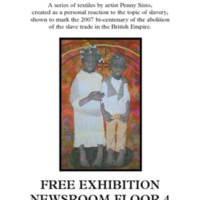
Threads of Strength and Fortitude
Threads of Strength and Fortitude was an exhibition of a series of textiles by artist Penny Sisto, created as a personal response to the bicentenary. The quilts were shipped over from New Albany, Indiana, and exhibited at the Royal Armouries in Leeds. Eight quilts explored the theme of slavery through depictions of servitude, emancipation and the flight to freedom. Pieces on show include 'Slave Ship 1,' which depicts eight enslaved Africans chained by their necks on a slave ship. Another quilt, 'Ran Away', showed a farmer leading Underground Railroad travellers by lantern light. The exhibition was accompanied by an interactive DVD, 'Ordinary People, Extraordinary Courage: Men and Women of the Underground Railroad in the Indiana and Kentucky Borderland'. There was also a series of events, including guest lectures and workshops on the subject of the abolition of slavery aimed at school and community groups. Art-based workshops explored the themes of peaceful resistance.
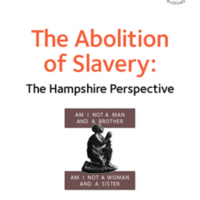
The Abolition of Slavery: The Hampshire Perspective
A touring exhibition exploring Hampshire's links with slave ownership and the abolition campaign was produced by (and featured material from) Hampshire Museums and Archives Service and Hampshire Record Office. The exhibition was on show in the Record Office foyer, before travelling to museums, schools and community centres around the county. The exhibition revealed that there were slave owners living in places in Hampshire such as the village of Hurstbourne Tarrant, and told the story of a slave-trading voyage in 1700 led and financed by men from the Titchfield area. Black servants, very likely former slaves, could be found in unlikely places such as Martyr Worthy and Bramdean. The abolition campaign was fought in the columns of the Hampshire Chronicle and the Hampshire Telegraph, and communities as diverse as Portsmouth, Whitchurch and Fordingbridge sent in petitions to Parliament on the subject. The exhibition also mentioned white slaves taken from the English coast by Barbary pirates, and the testimony of a group of emancipated slaves from Cuba who arrived in Southampton in 1855 on their way to Lucomi in Africa.
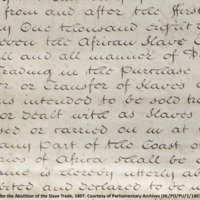
Guernsey and the Slave Trade
A display in the entrance foyer of Guernsey Museum in 2007 explored the island's connections with slavery and the slave trade. Relevant items from the museum's collection included a slave collar and chain from a slaver intercepted by a Guernsey captain on anti-slavery patrols, and a 17th-century portrait of Anne de Beauvoir and a slave child. Guernsey was involved in the transatlantic slave trade via islanders directly involved in the traffic (for example, Thomas Ebworthy of the ship 'Anne Galley'); ships known to be involved, such as the 'African' and the 'Fanny'; and islanders' involvement with the supply of goods or services.
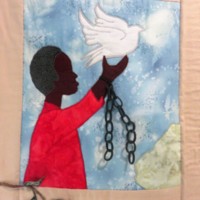
The Abolition of Slavery Quilt
The Abolition of Slavery Quilt was created to commemorate the bicentenary by the Freedom Quilters of Wisbech, a community group with an interest in patchwork and quilting. The quilt is made of several panels, one of which depicts the Thomas Clarkson memorial in Wisbech town centre; other panels stress the link between Christianity and the abolition of the slave trade. It was displayed at Wisbech Baptist Church at the Annual Rose Fair in July 2007. The Rose Fair Flower Festival raises money for charity, and in 2007 had a theme of 'Heroes of Freedom'. The quilt was also loaned to Peckover House, a National Trust property in Wisbech. It remains on display at Wisbech Baptist Church.
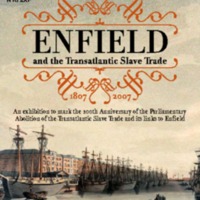
Enfield and the Transatlantic Slave Trade
An exhibition to mark the bicentenary was developed by Enfield Museum Service in partnership with the British Museum and Enfield Racial Equality Council. The exhibition looked at West African culture, the development of the local African community, the links between the transatlantic slave trade and Enfield, wealthy landowners and Quaker abolitionists who lived in the area. Free family days held during school vacations offered traditional Ghanaian story-telling, dancing and drumming, crafts and object handling. Living History Days gave visitors the opportunity to meet actors portraying William Wilberforce and Olaudah Equiano. School workshops included a drama session and performance about a runaway slave developed from material from Lambeth Archive. The museum service also produced a book, edited by Valerie Munday, which explored further the links between Enfield and the slave trade. The book was sent to all schools in the borough, and formed the basis of a teaching resource aimed at Key Stages 2 and 3. Loan boxes and handling collections provided by the museum service include Ghanaian artefacts and items relating to the slave trade. In 2011, Enfield Racial Equality Council unveiled a plaque to commemorate abolition at the Enfield Civic Centre.
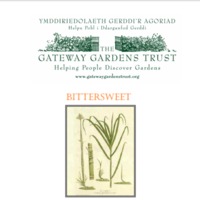
Bittersweet: Sugar, Spice, Tea and Slavery
The Bittersweet programme by the Gateway Gardens Trust involved 80 free guided garden visits over two years, around more than 30 gardens in Wales with a range of community groups, schoolchildren and lifelong learners. The themes of the visits and a mobile exhibition were the links between the slave trade and historic gardens, their makers, what they planted, Welsh abolitionists and the wider links with local communities in Wales. Historic gardens provided the starting point, looking at how everyday vegetables and fruits - beans, potatoes, tomatoes etc. - first reached the UK from the Americas. The project also looked at the history of afternoon tea, and the links between sugar, cotton and tea and slavery. The groups reflected on how many industries, grand houses and gardens were built from wealth linked to slavery, such as Cyfarthfa Ironworks in Merthyr and the expansion of the slate industry at Penrhyn Quarry. Early 18th century-style newspapers were produced, aimed at schoolchildren and adults.
Gardens involved included Cardiff’s Bute Park, Swansea’s Singleton Park, the National Botanic Garden in Carmarthen, Gwydir Castle in Llanrwst, Dyffryn Gardens, Portmeirion, Penrhyn Castle, Picton Castle, Dinefwr Park and Castle and Aberglasney Gardens.
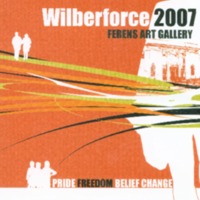
Wilberforce 2007 at Ferens Art Gallery
Hull Museums had a programme of special exhibitions at the Ferens Art Gallery commemorating Wilberforce 2007. The Abolitionist's Parlour was a new work commissioned by the Gallery. The video installation by artist Keith Piper explored the role of William Wilberforce through the writings of a fictional black woman and ex-slave. Uncomfortable Truths: The Shadow of Slave Trading on Contemporary Art, in partnership with the Victoria and Albert Museum, explored the uncomfortable relationship between art, design and slavery through the work of eleven international artists. The international audio-visual exhibition Anne Frank + You explored the thoughts and themes from Anne Frank's diary which included conflict, racism, democracy and freedom. Mind Forg'd Manacles: William Blake and Slavery was an exhibition of rare watercolours and prints by William Blake, on loan from the British Museum. Ferens Art Gallery also hosted La Bouche du Roi by Romuald Hazoume, a multi-media exhibition based around the Brookes slave ship.
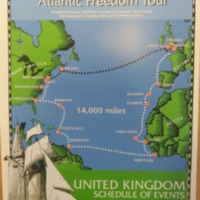
Amistad America's Atlantic Freedom Tour
A replica of the nineteenth-century slave ship Amistad visited Liverpool, Bristol and London as part of the Atlantic Freedom Tour in 2007-2008. The ship set sail from its home port of New Haven, Connecticut, on a 16-month 14,000 mile transatlantic voyage to retrace the slave industry triangle. The ship stopped at more than a dozen Atlantic ports, including Freetown in Sierra Leone. Students from the UK had the opportunity to join the crew of the schooner – a replica of the original ship commandeered by 53 of its African captives in 1839 – on one of its legs, and transmitted text, images and videos back to the classroom. At each UK port, the ship was open for guided tours. There were also accompanying lectures.
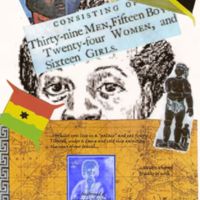
Hidden Stories
A collaborative project between Barnsley Archives and Local Studies, the Cooper Gallery and Cannon Hall exploring local connections to the slave trade. Cannon Hall is the ancestral home of the Spencer Family, who made their fortune in the local iron industry. In the mid-18th century, Benjamin Spencer became involved in the slave trade, and owned a slave ship called ‘Cannon Hall’; in contrast, Walter Spencer-Stanhope, who inherited the hall in 1775, supported the abolitionist movement. Pupils from local primary schools explored the hall’s connections to the slave trade and abolitionism, and produced artwork in response to the hidden histories, some of which were exhibited in the Cooper Gallery’s exhibition, ‘Witness’.
The ‘Hidden Stories’ project also explored the Crossley Family archive held by Barnsley Archives and Local Studies (Benjamin Crossley owned a sugar plantation in Jamaica). Barnsley Archives worked with the Barnsley Black and Ethnic Minority Initiative on a project to encourage black and minority ethnic groups in the Barnsley area to discover more about their roots. Other partners included Barnsley Out of School Study Support Network, Foulstone City Learning Centre and Just Addictive Music.
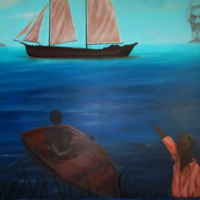
Underground Railroad
In 2012, Mexican muralist Luis Zarate created the mural Underground Railroad on Bay Street in Sodus Point, Wayne County in upstate New York. Sponsored by the Neighborhood Association of Sodus Point, the mural depicts the involvement of Sodus Point in the Underground Railroad of the 1850s. Captain George Garlock, who captained the ship Free Trader out of Sodus Point and picked up runaway slaves on his way to Canada, is depicted in the centre of the mural on the boat between the black antislavery leaders Harriet Tubman and Frederick Douglass. On July 14, 2012, a dedication ceremony revealed a plaque was mounted below the mural that reads: “This mural depicts a scene of the Underground Railroad. From stories passed down there were several safe houses in this area that were used to harbor 'Freedom Seekers.' These included the old Cohn Farm and the old Sodus Fruit Farm and what is now Maxwell Creek B & B and Silver Waters B & B. Sometimes a schooner, out of the old Sodus Point ore dock, would pick up slaves on its way to Canada."
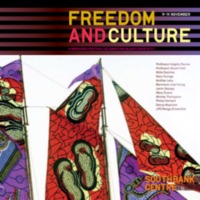
Freedom and Culture 2007
'Freedom and Culture' was a year-long nationwide programme to mark the bicentenary, conceived by Baroness Lola Young of Cultural Brokers (London) and Dr Nima Poowaya-Smith of Alchemy (based in Leeds). In partnership with artists, activists and cultural commentators, the programme explored the dimensions of oppression and freedom around the bicentenary, culminating in a weekend 'celebrating creativity and the African Diaspora' at the Southbank Centre in November 2007. One of several exhibitions that took place as part of the initiative was ‘Crossing the Waters’ at Cartwright Hall in Bradford, which took its central metaphor from the transatlantic slave trade. Almost all the works shown – from Sonia Boyce, Yinka Shonibare and others – were drawn from the permanent collections of Bradford Museums, Galleries and Heritage. The exhibition later toured to the City Gallery, Leicester in 2008.
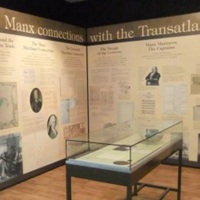
'A Necessary Evil'
An exhibition which explored the connections between the Isle of Man and the transatlantic slave trade between 1718 and 1807, as shown in assorted archives. Mounted in the Lower Folklife Gallery at the Manx Museum, the display revealed evidence of Manx captains, officers and crew recorded on slaving ships in the Port of Liverpool muster rolls or in probate records. Documentation shows Manx merchants dealing in ‘Guinea goods’ and investing in trading voyages; also Manx people part-owning or managing plantations in the Americas. The title quote was taken from the memoirs of Manxman Captain Hugh Crow, published posthumously in 1830. Crow wrote, ‘I have viewed the abstraction of slaves from Africa to our colonies as a necessary evil, under existing circumstances’. In July 1807 the last legal slave voyage for an English vessel began from Liverpool. Crow, aboard 'Kitty’s Amelia', took command en route to Bonny.
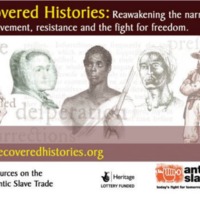
Recovered Histories
In the Recovered Histories online resource, Anti-Slavery International digitised and made accessible for the first time a collection of over 800 pamphlets dating from the 18th and 19th centuries relating to the transatlantic slave trade. The resource captured the narratives of the enslaved, the enslavers, slave ship surgeons, abolitionists, parliamentarians, clergy, planters and rebels. An accompanying touring historical exhibition and an education pack featured testimonies and pictures from Africans subjected to slavery, those participating in the enslavement and those who fought against it. An outreach and resources programme included a series of free regional seminars in April and May 2008, which encouraged dialogue about the transatlantic slave trade and its legacies by bringing together a wide range of groups and organisations who worked on these issues. The workshops were held in Bristol, Edinburgh, Leeds, London and Manchester. A series of short stories were published, inspired by the Recovered Histories resource.
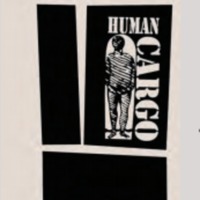
Human Cargo: The Transatlantic Slave Trade, its Abolition and Contemporary Legacies in Plymouth and Devon
Human Cargo was a partnership project between Plymouth City Museum and Art Gallery, and the Royal Albert Memorial Museum, Exeter. The project consisted of two main components. The first was a historical exhibition, which explored the development of the transatlantic slave trade and, in particular, the role of Plymouth as a port, the involvement of the City's dignitaries and the South West's links with the abolition movement. The second part was a contemporary art response to modern forms of slavery and historical legacies, including the flower picking trade, sweatshop labour and the Fair Trade Movement. This work was newly commissioned and included audio visual pieces, installations, hand-printed wallpaper and participatory objects. A variety of events and activities took place alongside the exhibition including education workshops, performances, African music and storytelling activities, and Elizabethan House re-enactment sessions.
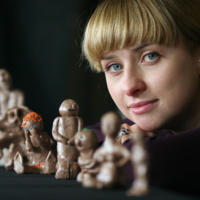
Revealing Histories: Remembering Slavery (Museum of Science and Industry)
The Museum of Science and Industry (MOSI) was one of eight heritage bodies in the ‘Revealing Histories: Remembering Slavery’ partnership in Greater Manchester. The project set out to explore the history, impact and legacy of slavery on Britain through collections and community links in the North West.
An exhibition and trail at MOSI explored the connections between Manchester’s economic success from the late eighteenth century onwards and its international trade, particularly the cotton trade with the USA, with its associated links to the transatlantic slave trade. Items identified in the collection included an American Civil War patriotic envelope from 1861, which satirised Britain's willingness to ignore the plight of American slaves. Other events included the creation of a series of terracotta figures depicting slaves on a slave ship by artist Annette Cobley. Workshop sessions to accompany this artwork were based on the theme of silence surrounding slavery.